Article by Amanda Knight
 |
| One of the deeds in the Mildred Cookson Collection. |
| The deeds and documents in the Mildred Cookson collection are largely concerned with documenting dispositions of land, all of which relate in some way to mills, millers or millwrights. This blog takes a look at some interesting features uncovered whilst cataloguing her collection, which is available via our website. The majority of the indentures catalogued date from the 19th century, although there are plenty from the 17th and 18th centuries too. Some of the mills are known to us and still exist today and others await identification and indexing. In terms of geographic spread, most of the mills identified are English with just two mills from Wales and one rather surprising addition from Pennsylvania, USA. Post, smock and tower windmills feature as well as watermills and the type of produce milled at them is varied: corn mills, fulling mills, silk mills, woollen mills and bone mills all feature. Mildred tells us that the collection was accumulated over 30 years, principally from online auctions of legal papers from now defunct law firms. One could perhaps argue that these documents have outlived their usefulness, having served their primary transactional purpose: conveyances of land, now documented electronically at the Land Registry; grants of probate for wills long-since proved. But this ignores the secondary value which these documents hold in providing unique insights to social and historical conventions from our collective pasts as well as practical applications today. |
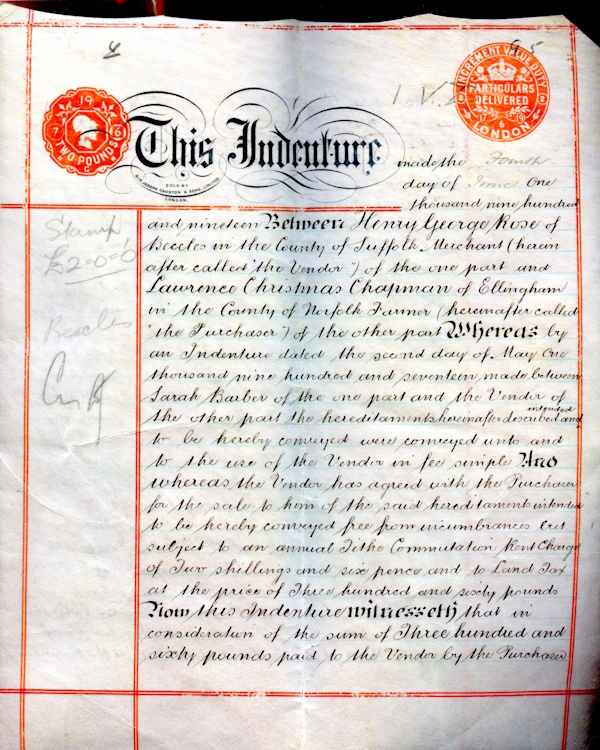 |
| Conveyance of a windmill, house and land at Ditchingham, 4 June 1919 – MCFC-IND-070-030 |
| The physical quality of the documents themselves is fascinating: the durable property of the vellum (writing material made from animal skin) on which the majority of the indentures are written is evident. All hand-made, their longevity certainly brings into focus the fragile nature of some of our more recent innovations, for example, thermally printed facsimile paper. It is also interesting to see the development in handwriting styles over the centuries. Earlier documents, such as one from 1552, the oldest in the collection, use the ‘Secretary hand’. After the mid-17th century, a more familiar ‘Copperplate’ hand is apparent, as is the increased use of paper for appended maps, plans and legal correspondence, much of which is beautifully watermarked. However, vellum continues to be the preferred medium for recording dispositions of property well into the 20th century, the latest example in Mildred’s collection being a conveyance of Ditchingham Mill, Norfolk in June 1919 (above). |
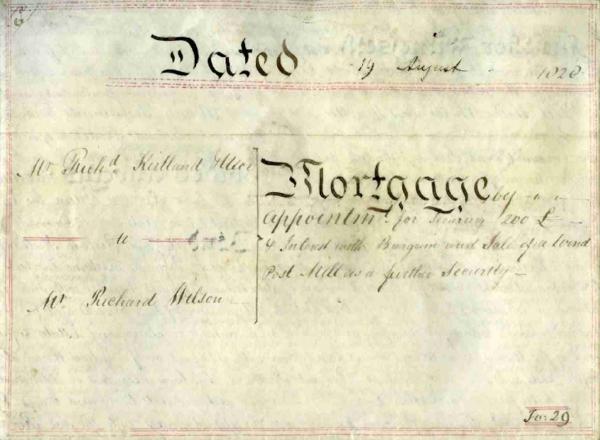 |
| Mortgage and sale of a post mill at Messingham, Lincolnshire, 19 August 1828 – MCFC-IND-044 |
| Examining the execution provisions of these indentures has revealed a profusion of seals, signatures and official stamps – enough to support an entire academic paper on the topic, one suspects. However, what stands out to me are the instances where these documents are executed by a person’s ‘mark’. One can speculate as to the extent to which these ‘marks’ represent an imbalance of knowledge and power in the transactions recorded in them. MCFC-IND-044 (above) records a mortgage granted in 1828 over a post mill at Messingham, Lincolnshire as security for a loan of £200. The document is signed by the miller and his wife, the latter by her mark and seal. The woman is the daughter of the previous miller and she is a party to the document by virtue of her inheritance of the mill. Up until the Married Women’s Property Act 1882, a woman’s property became her husband’s on marriage and whilst she was still required to be a party to any disposition of that property, it was generally accepted that the decision whether and how to dispose of it was for the husband alone. The fact that our miller’s wife signs by her mark suggests she is illiterate, and one hopes that she was fully aware of what she was signing. Coincidentally, it was not long after this transaction that the Fines and Recoveries Act 1833 was passed. This introduced a provision to require any woman selling property jointly with her husband to be assessed separately by a public commissioner, to certify that she understood the nature of the transaction and to ensure that she was not being forced into it against her will. An example of one of these certificates can be found in a deed concerning an 1845 sale of a watermill at St John Street, Wells, from which the plan below is taken. |
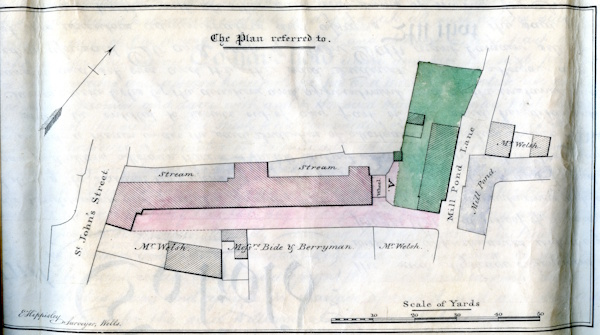 |
| Plan from indenture relating to the sale of water grist mills and land adjoining St John Street, Wells, 1845 – MCFC-IND-003 |
| Nevertheless, one cannot be too sweeping in making assumptions about a person’s capacity and knowledge simply from the fact that they sign by their mark. MCFC-IND-027 (below) shows the ‘mark of Henry Clint’ on an 1808 disposition in which he receives the sum of £1,425 as consideration for a watermill in Bewerley, Yorkshire. This equates to £66,300 today (which according to the National Archives currency converter would have been enough to buy 135 horses or pay for 9,500 days’ wages for a skilled tradesman). Regardless of whether he could read or write, Mr Clint seems to have negotiated a good deal, comparing favourably with the sums exchanged on comparable watermills in the catalogue. |
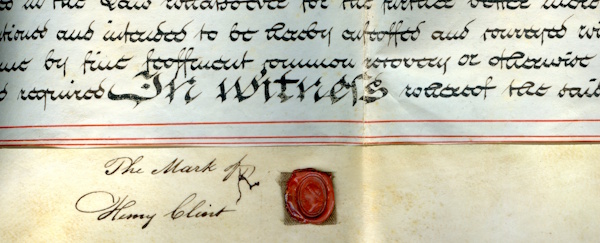 |
| Seal and mark of Henry Clint, 1808 – MCFC-IND-027 |
| With so much of our heritage to be gleaned from these indentures, it is clear that their value extends well beyond their original evidential purpose. Moreover, the collection also records information which could have practical application today. MCFC-IND-022 (below) gives an account of trees planted at either Thoresby Park or Holme Pierrepont Hall in 1762 which could be relevant to their estates management teams today. The file of papers about Beckery Mill, Glastonbury (MCFC-IND-069) could be helpful to the trust that has been set up to regenerate this area. The long lists of milling equipment conveyed with each transaction could assist modern millwrights in their work to preserve and maintain heritage mills. But in any event, these documents are beautiful and interesting in their own right, providing a vivid testimony about our past and we must thank Mildred for allowing us to make them available for all to enjoy. |
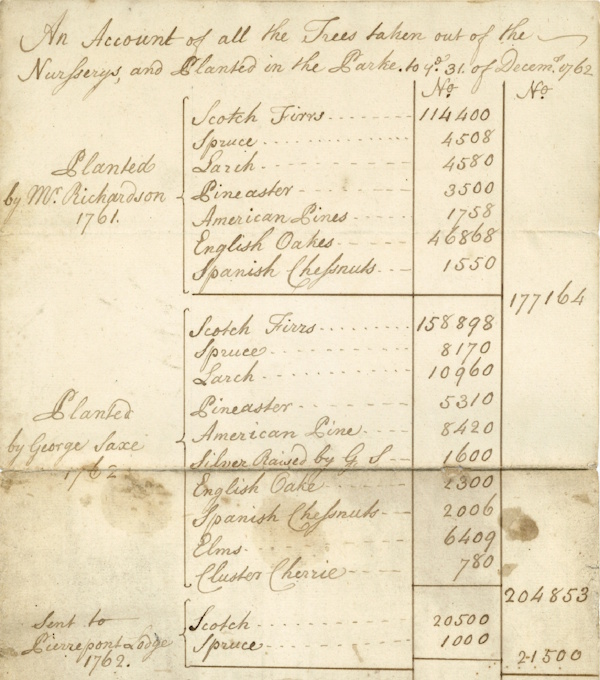 |
| “An Account of all the Trees taken out of the Nurserys and Planted in the Parke to 31 December 1762” – MCFC-IND-022 |
